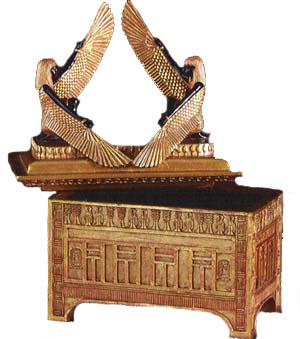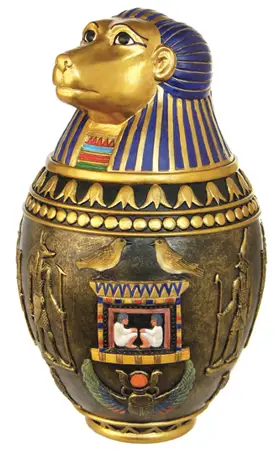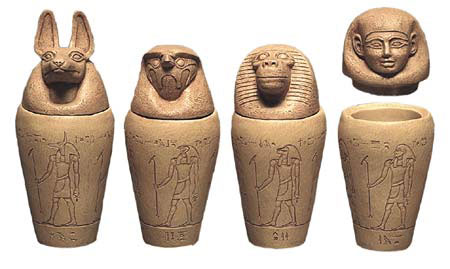The student of Egyptian Ceramics art has reason to be interested in the history of Egyptian art. No other era in ancient times was so powerful or had such influence in the department of our present study.
Each new discovery which is made leads towards the conviction that the art of enamelling pottery, which has been, wherever known, the highest means of uniting beauty with utility, first invented by the Egyptians nearly or quite four thousand years ago, has never been practised by any nation which did not, directly or indirectly, learn it from them.

Types of Egyptian Ceramics pottery
The Egyptians made two kinds of pottery–the one, ordinary soft pottery; the other, a coarse, gritty compound, loose in its character and lacking cohesion, sandy, easily crumbled, very white, but always covered with a strong glaze or enamel.
This material was chiefly used for small objects, seldom for vases. The beauty of the enamel on these objects has been the envy of potters in modern times. The blue has never been surpassed, if, indeed, it has ever been equalled. These shades vary from the most intense bleu-de-roi and pure turquoise to pale-blue tints approaching white.

The earliest pottery types found were from the areas of Tasa and Badari, dating from 5500 to 4000 BC. The Tasa pots were usually of a dark red colour, formed into a tulip-shape, with etched designs around the outside of the pot.
The Badari pots, made of a lighter clay than the Tasa pots, were fired at very high temperatures and placed upside down in ashes to cool, giving them a distinct black rim.

There were Canopic Jars, the four stone jars that contained the interior parts of the body which were removed before embalming and deposited with the mummies these were the stomach, heart, lungs and liver.
Osirian figures were small objects in enamel pottery deposited with the dead, representing mummies. These resembled each other in the hieroglyphic legends painted or impressed on them. Egyptian Ceramics jars filled with food offerings were left in tombs.
The study of pottery has also been very important in studying regional development and trade. We are today finding more and more evidence of Egypt’s influence in the region by pot shards. The pottery of predynastic Egypt was often of a surprisingly fine quality.
Badarian period pottery was made without the use of a potter’s wheel, and it was usually the woman who turned out the pottery. These beautiful pieces were burnished to a lustrous finish and fired leaving a black upper section and lower, deep red section.